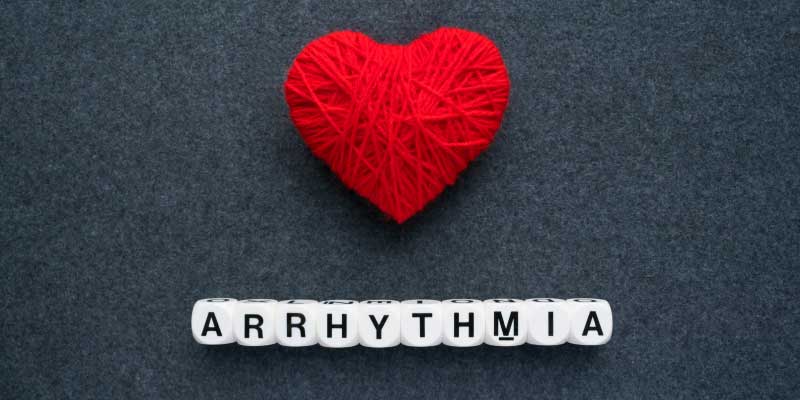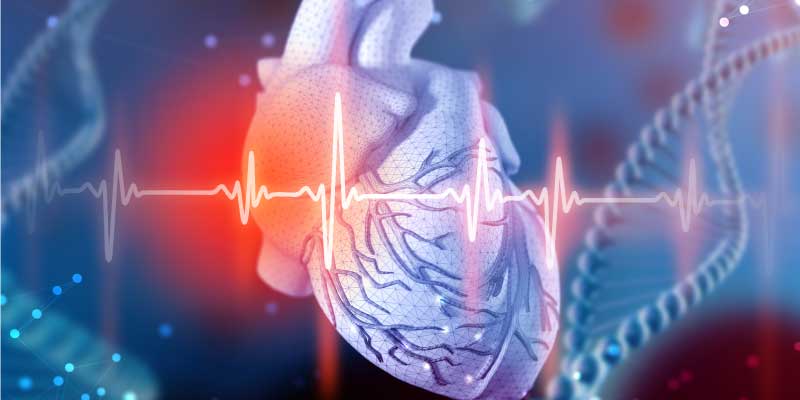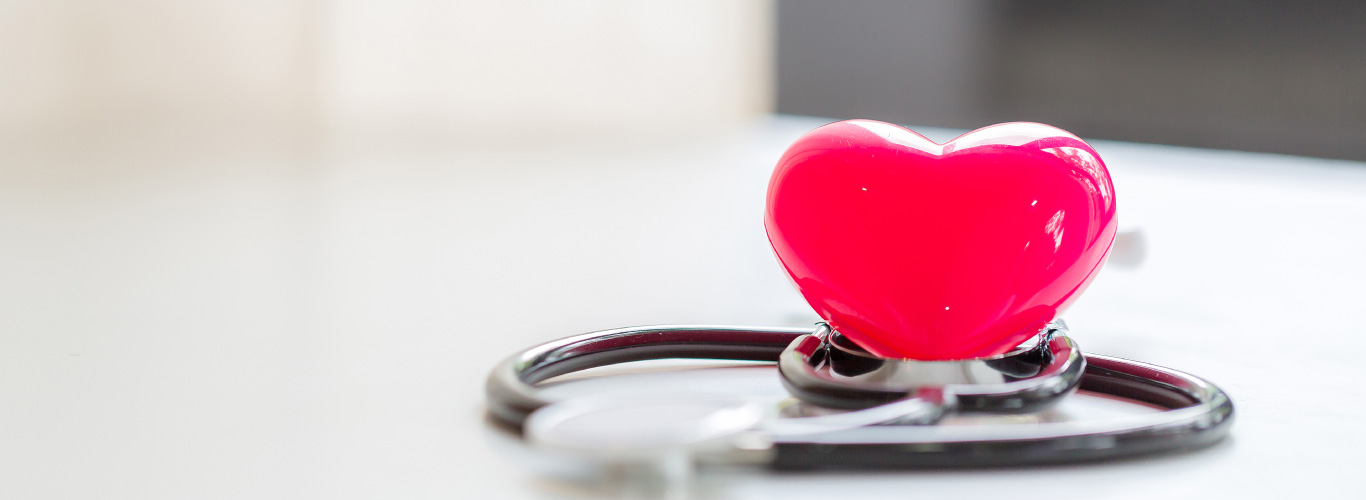Arrhythmia is a type of heart rhythm problem that occurs when the electrical signals of the heart that coordinate heartbeats don’t function properly. This can lead the heart to beat too slow, fast, or irregularly. It can feel like racing or fluttering of the heart.
There are many types of Arrhythmia, some of them are:
- Tachycardia: In this condition, the heart beats very fast with a rate of more than 100 beats per minute.
- Bradycardia: In this condition, the heart beats very slowly with a rate of below 60 beats per minute.
- Supraventricular Arrhythmias: In this, “Supra” means above and “ventricular” refers to lower heart chamber. So, it is a broad term that includes many types of Arrhythmia like Atrial flutter and fibrillation that begins in the upper chambers of heart i.e. atria. In this condition, the heart beats at rate of 160-200 beats per minute.
- Ventricular Arrhythmias: This condition originates in the lower chamber of heart i.e., ventricles.
- Bradyarrhythmias: This condition indicates the slow heartbeat that generally occurs by disease in the heart’s conduction system such as atrioventricular (AV) node, sinoatrial (SA) node, or HIS-Purkinje network
- Fibrillation: Fibrillation occurs when the chambers of heart contract abnormally or irregularly. When Atria (upper heart chambers) contract abnormally, it is termed as Atrial Fibrillation. And, the ventricles (lower heart chamber) contracts abnormally, it is known as Ventricular Fibrillation.
- Atrial Flutter: In this condition, one of the areas of atria is not conducting properly.
In many cases, the condition is not harmless but the regular abnormality of heart beat can cause damage to the heart and lead to many serious conditions such as cardiac arrest, heart attack, or other heart diseases.
Some Common Facts About Arrhythmia

- Arrhythmia is a condition where the heart beats irregularly or abnormally (either too slow or fast). Also, the word “Arrhythmia” refers to the changes in heart’s electrical signals.
- It is also known as cardiac dysrhythmia or irregular heartbeat.
- People with this condition may experience difficulty in following high-intensity workouts or exercises.
- According to the Centers for Disease Control and Prevention estimation, approximately 2.7 to 6.1 million people in the U.S. suffer from Atrial Fibrillation, which is a type of Arrhythmia.
- Sometimes this condition has no noticeable symptoms but in other cases, people experience symptoms. And, the most common symptom is shortness of breath.
- The condition can be treatable if diagnosed early, this is why it is important to consult doctors in case of any noticeable symptoms.
Causes of Arrhythmia

The heart has four chambers and the sinoatrial node or sinus which is the natural pacemaker of the heart which controls the heart rhythm. It generates electrical impulses that help the heart to beat normally. It occurs when this functioning is interrupted due to many conditions or reasons. These conditions include:
- Heart Attack occurring right now
- Damaging of heart tissue
- Cardiomyopathy where the structure of heart changes
- Coronary artery disease
- High Blood Pressure
- Valve disorders
- Potassium and sodium imbalances
- Hypothyroidism and Hyperthyroidism
- Diabetes
- Sleep apnea
Sometimes this condition can occur during the healing process of heart surgery or after heart surgery. Other factors include:
- Genetics
- Alcohol abuse
- Drug abuse
- Excessive consumption of caffeine
- Congestive heart failure
- Mental stress and Anxiety
- Smoking
Symptoms of Arrhythmia

As discussed earlier, the condition may not show any warning signs or symptoms. However, here are some of the symptoms of Arrhythmia:
- Fast heart rate or heartbeat (Tachycardia)
- Slow heart rate or heartbeat (Bradycardia)
- Fluttering in the chest
- Chest pain
- Breathlessness
Some other symptoms are:
- Anxiety
- Fatigue
- dizziness
- Sweating
- Lightheadedness
- Fainting
Symptoms of Tachycardia include:
- Shortness of breath (dyspnea)
- dizziness
- Fainting or nearly fainting
- Fluttering in the chest
- Discomfort in chest
- Sudden weakness
- Lightheadedness
Symptoms of Bradycardia include:
- Chest pain angina
- Trouble in concentrating
- difficulties in workout and exercising
- confusion
- Tiredness
- dizziness
- fatigue
- palpitations
- shortness of breath
- lightheadedness
- fainting (syncope)
- Sweating (diaphoresis)
Symptoms of Atrial Fibrillation include:
- Discomfort or pain in chest
- breathlessness
- Palpitations
- weakness
- dizziness
- fainting, or nearly fainting
Diagnosis of Arrhythmia

To Diagnose Arrhythmia , doctors first review a patient’s medical history, symptoms. After that, they conduct a physical examination or test for conditions that may trigger Arrhythmia. Doctors also perform heart monitoring tests that include:
- Electrocardiogram (ECG): This test is performed to measure the duration and timing of electrical impulses of heart. It also determines the heart beat rate.
- Event Recorder: It is a portable ECG device that measures heart rhythm at the time of any symptoms.
- Holter Monitor: It is also a portable ECG device that helps in recording the heart’s activity while performing daily routine tasks.
- Echocardiogram: This is a noninvasive test that helps in generating heart image to determine the size, structure and movement of heart.
- Implantable Loop Recorder: This test is performed in case of infrequent symptoms. This helps in recording the electrical activity of the heart and detect abnormal heart beat.
In case the doctors does not find any causes and symptoms of this condition, they may also perform further tests, which include:
- Stress Test: This test helps in determining whether the person is having coronary artery disease, which may cause Arrhythmia.
- Tilt Table Test: In case the person feels nearly fainting symptoms, this test is performed. In this, the doctors first monitor and compare the blood pressure and heart rate when the patient lies on the flat table or on the tilted table.
Conclusion:
This condition cannot be a serious condition, if diagnosed and treated early. However, as the symptoms are not visible in most of the cases, the condition can lead to other medical conditions including heart attack, heart failure, etc. This is why it is always advisable to consult the doctor in case of any symptoms.




